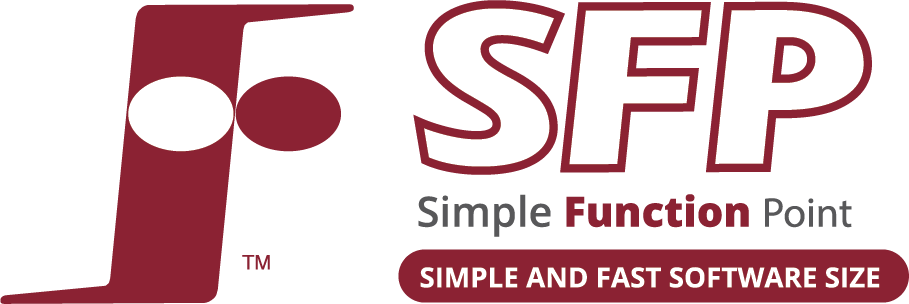Simple Function Points (SFP)
Simple and Fast Software Size

The ICT world is going “agile” and IFPUG is again leading the way in Functional Size Measurement Methods!
After having “defined” the concept of functional size and contributed to the evolution of the international standards, IFPUG is now presenting the next step to the community of measurement practitioners and software developers: a lightweight Functional Measurement Method!
The Simple Function Point method was designed by Roberto Meli in 2010 to be compliant with the ISO14143-1 standard.
Using the ISBSG data in a research project, Meli had the intuition that it would be possible to satisfy the market needs for a lightweight, yet rigorous method to increase the acceptance of FSMM in all communities of software developers. The method was improved by a community of experts in the Simple Function Point Association and then acquired by IFPUG in 2019.
An IFPUG Task Force, including members of the FSSC and NFSSC, spent two years analyzing and experimenting with the method. It completed its task of producing Version 2.1 of the Simple Function Points Manual in October 2021. After a detailed review, the IFPUG board approved the document for distribution to the market.
The highlights of the method are:
- Only two Base Functional Components: Elementary Processes and Logical Files
- No “primary intent” identification is needed
- No differentiation between internal and external logical files
- No internal “complexity” of BFCs
- No DET, FTR, RET identification
- A high statistical convertibility with the traditional FPA
The immediate advantages are:
- It is quick
- It is applicable earlier in the lifecycle
- It needs less details
- It is easy to learn
- It is a perfect “companion” for story points in agile processes
SFP Certification Coming Soon!
The Simple Function Points Task Force is working hard to implement a new certification focused on the SFP method. Stay tuned for more details.
IFPUG presents a lightweight Functional Measurement Method designed by Roberto Meli in 2010 known as Simple Function Point, compliant with the ISO14143-1 standard. It’s the next step to the community of measurement practitioners and software developers.
With the intention of satisfying the market needs with an easy, fast and simple, yet rigorous method to increase the acceptance of FSMM in all communities of software developers, Roberto Meli created SFP. The method was improved by a community of experts in the Simple Function Point Association and then acquired by IFPUG in 2019.
Download the Latest Simple Function Points Counting Practices Manual (SPM) Release
The main goals of the SPM are:
- Provide a clear and detailed description of the IFPUG Simple Function Point method.
- Facilitate the homogeneous application of the rules of the IFPUG Simple Function Point method by experienced practitioners.
- Ensure that SFP counts are consistent with the counting practices of IFPUG affiliate members. Guide on measuring SFP using the deliverables of popular methodologies and techniques.
- Provide a common understanding to allow tool vendors to provide automated support for IFPUG Simple Function Point counting.

